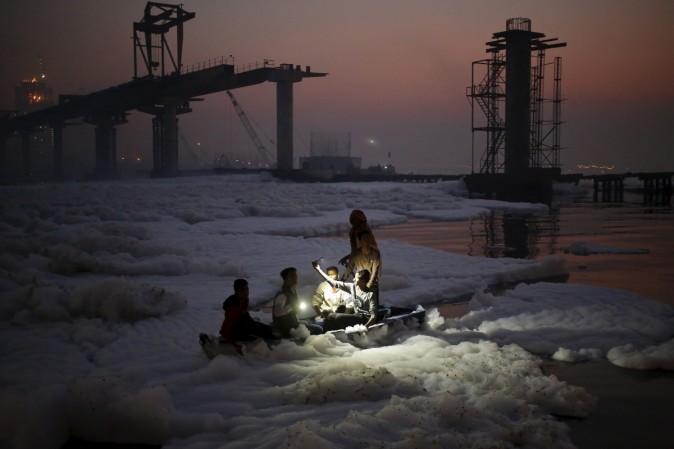The Uttar Pradesh Pollution Control Board (UPPCB) data shows that the pollution level in the Yamuna has worsened this year.
The Yamuna enters Noida with no dissolved oxygen in it and exits in the city even with higher level of pollution.
The UPPCB report does not mention the data for industrial effluents like quantity of hard metals -- mercury, arsenic, lead, etc -- the state pollution body has tested water on basic parameters -- dissolved oxygen (DO) and biochemical oxygen demand (BOD) -- and found the pollution levels very high.
According to the data, in May 2021, the dissolved oxygen (DO) level of Yamuna was nil at Okhla barrage, the entry point of the river.

The minimum requirement of DO is 4 mg/l for category D (propagation of aquatic life) water and 6 mg/l for category A (drinking).
As per the UPPCB report, Noida is the only city in Uttar Pradesh where the Yamuna falls under 'E' category, that makes the river unfit for drinking even after conventional treatment and disinfection, bathing or survival of fish and other aquatic organisms.
January has been the only month when the river entered the city at Okhla barrage with some life in it with the DO value of 1.4 mg/l, which died at Tilwada where it meets the even more polluted Hindon. The two rivers support no aquatic life.
Praveen Kumar, regional officer, UPPCB, said that the 'untapped sewage' from Shahdara drain that enters from Delhi was responsible for the poor condition of Yamuna, besides additional pollutants from Kondli drain and Hindon river.
"Shahdara drain from Delhi meets the Yamuna after Okhla barrage near Sector 15A. The drain is untapped and brings effluents that fall directly into the river. It is the major source of pollution. Besides, there is Kondli drain that also originates in Delhi, but work on its remediation is under process in Noida through engineered wetlands. Then Hindon water that is very polluted falls in the Yamuna. The pollutants in the source drains vary from time to time," he said.















